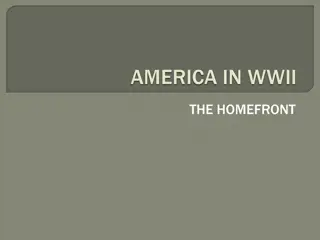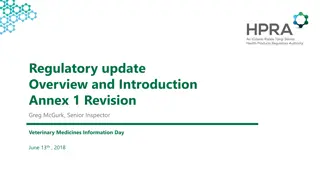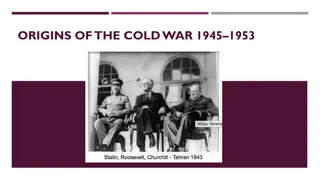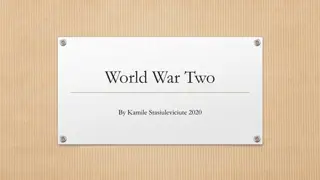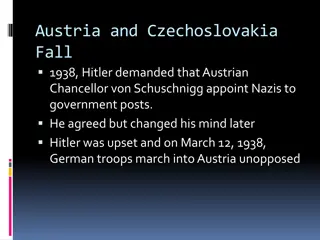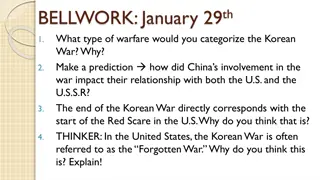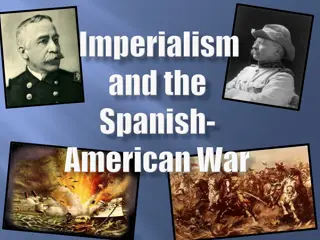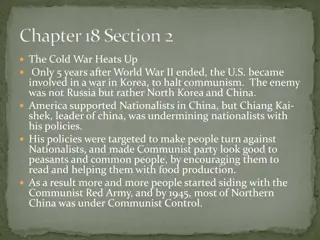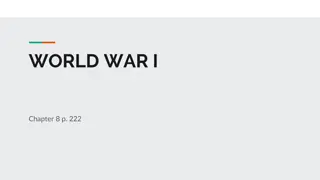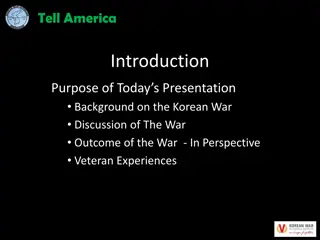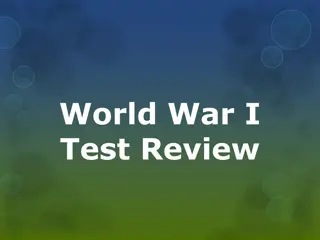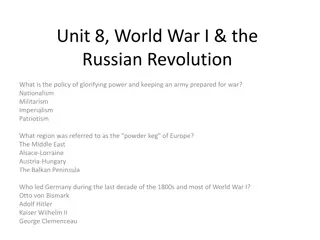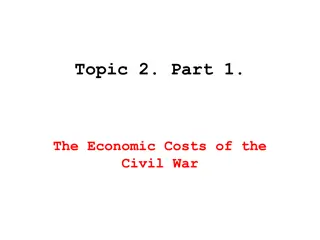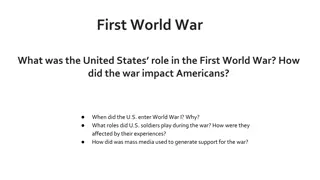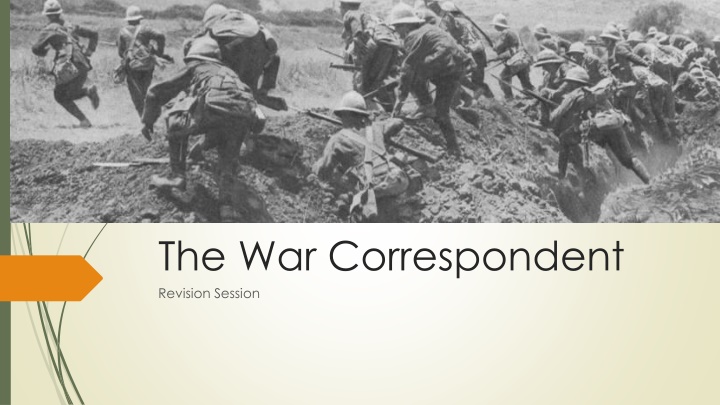
"The War Correspondent" Poems and Context
Explore the profound themes of war, nature, and human folly in "The War Correspondent" collection of poems, focusing on the Crimean War setting, structural nuances, language techniques, and historical context. Gain insights into the impact of war through the analysis of Gallipoli and Balaklava poems, delving into the intricate connections between past conflicts and contemporary interpretations.
Download Presentation

Please find below an Image/Link to download the presentation.
The content on the website is provided AS IS for your information and personal use only. It may not be sold, licensed, or shared on other websites without obtaining consent from the author. If you encounter any issues during the download, it is possible that the publisher has removed the file from their server.
You are allowed to download the files provided on this website for personal or commercial use, subject to the condition that they are used lawfully. All files are the property of their respective owners.
The content on the website is provided AS IS for your information and personal use only. It may not be sold, licensed, or shared on other websites without obtaining consent from the author.
E N D
Presentation Transcript
The War Correspondent Revision Session
The War Correspondent Actually made up of 7 poems Only two are in our anthology The War Correspondent conveys a sense of the wastefulness and destruction of war, set against the ever-recurring rhythms of nature.
All but one are set in the Crimean War or so we thought Note on the Edexcel website: The teacher guide invites students to consider the First World War setting of Gallipoli and the Crimean War setting of Balaklava . Interestingly, Ciaran Carson has recently stated that both poems are based on the Crimean War, though the title Gallipoli does prefigure the chaos of the World War 1 Dardanelles campaign, or the chaos of any war. Considering different ways of interpreting texts is a key aspect of the study of literature. The consideration of context is not part of the assessment of contemporary poetry in either AS or A level and examiners will reward any reasonable readings of Carson s poems which are supported by the text.
Context Crimean War (1854-1856), which bridged a British/French alliance against Russia for influence in the Far East. The context of this poem is essential to appreciating the meaning behind it and therefore it is important to understand the background behind these battles and what people were fighting for. Balaklava recalls the famous incident in the Crimean War, a misunderstanding, the British Army was sent up a valley which the Russians were occupying. About 250 men and 400 horses were killed or wounded for no military purpose.
STRUCTURE Collection of 7 poems - work together in order to reveal things about the controversial topic of war. Gallipoli is one sentence long The use of only one full stop in the first poem gives a sense that the poem is trying to say that life is continuous and carries on no matter what. It also makes the moment when the poem ends with the full stop, very poignant because it really emphasises that something has stopped.
LANGUAGE TECHNIQUES Repetition wars carry on happening Figurative language (see IMAGERY) Proper Nouns historical context By listing all the ethnicities in Gallipoli , it reminds the reader of the ever present threat of war: England/Ireland, Britain/France, Turks/Arabs/Armenians, Turks/Greeks, Muslims/Christians Contrast In Balaklava there is a contrast between the living and the dead, through vividly describing the uniforms under the hot sun: the beauty of the Turkish and French clothes versus the decay and grotesqueness of the dead soldiers
IMAGERY Sensory imagery - In Gallipoli, the reader can get a real sense of what the town is like the reek of dung and straw Its so we can build up an image of the town and culture is like, and then foreshadowing it all being destroyed in war Colour imagery the colours all have different connotations so again, this adds another layer to how we interpret the poem. We can understand that the red ins probably suggestive of blood/anger/passion, tatters of scarlet cloth , which contrasts with the powder blue of their uniforms something which identifies them and instils the soldiers loyalty to a side The colour of the scarlet trousers of the French cavalry suggests how quickly the living may turn into the dead. Because both the trousers and the blood stained uniforms of their slaughtered counterpart are scarlet
Gallipoli is full of references to the act of buying and selling: farming, markets, factories, mining, drugs and sex for example. It reflects a world where everything is obtainable, especially for strong Empires whose rivalries were a catalyst for the First World War Natural imagery The soldiers in the colourful uniforms are described as like a bed of flowers however this is ironic because they are a destructive presence that kills both humans and the flowers as the march.
TONE Gallipoli doesn t really say much at all about the war, implying quite a sad tone, that war can happen anywhere, implying a very sad tone that war can happen anywhere, even places that may seem very peaceful and normal In Gallipoli, Carson presents a narrator trying to capture an impression of a chaotic environment. To create the sense of a crowded atmosphere, the lines and stanzas are densely packed with lots of descriptive language the place is a melting pot of races, of conflicting cultures and languages
CONCLUSION The last line of Gallipoli I have not even begun to describe Gallipoli , the narrator expresses that he s still at a loss of how to describe Gallipoli because of the dense nature of describing the greedy nature of ruling powers The end of Balaklava describes how they walk over the dead bodies which implies the idea that war creates complete destruction and then people just move on, making the reader question whether this is the right thing to do.
The Message By juxtaposing two different conflicts which were set 60 years apart, Carson highlights the world s apparent addiction to war. The fact that in WWI, the countries that were allies were different to the Crimean War, with Russia now fighting alongside Britain and France against the Turks and Germans, underlines the pointlessness of the previous conflict. Despite the two poems in the sequence being written about conflicts occurring around 60 years apart, they still appear similar. This displays the idea that nothing has changed and that war remains counter-productive, futile and destructive.
Comparisons The Deliverer controversy, modern issues History something going down in history, memories, war Giuseppe controversy, negative feelings towards war The Gun controversy
Find this PowerPoint and more notes www.blogasenglish.wordpress.com

![❤[PDF]⚡ Civil War Talks: Further Reminiscences of George S. Bernard and His Fel](/thumb/20551/pdf-civil-war-talks-further-reminiscences-of-george-s-bernard-and-his-fel.jpg)



